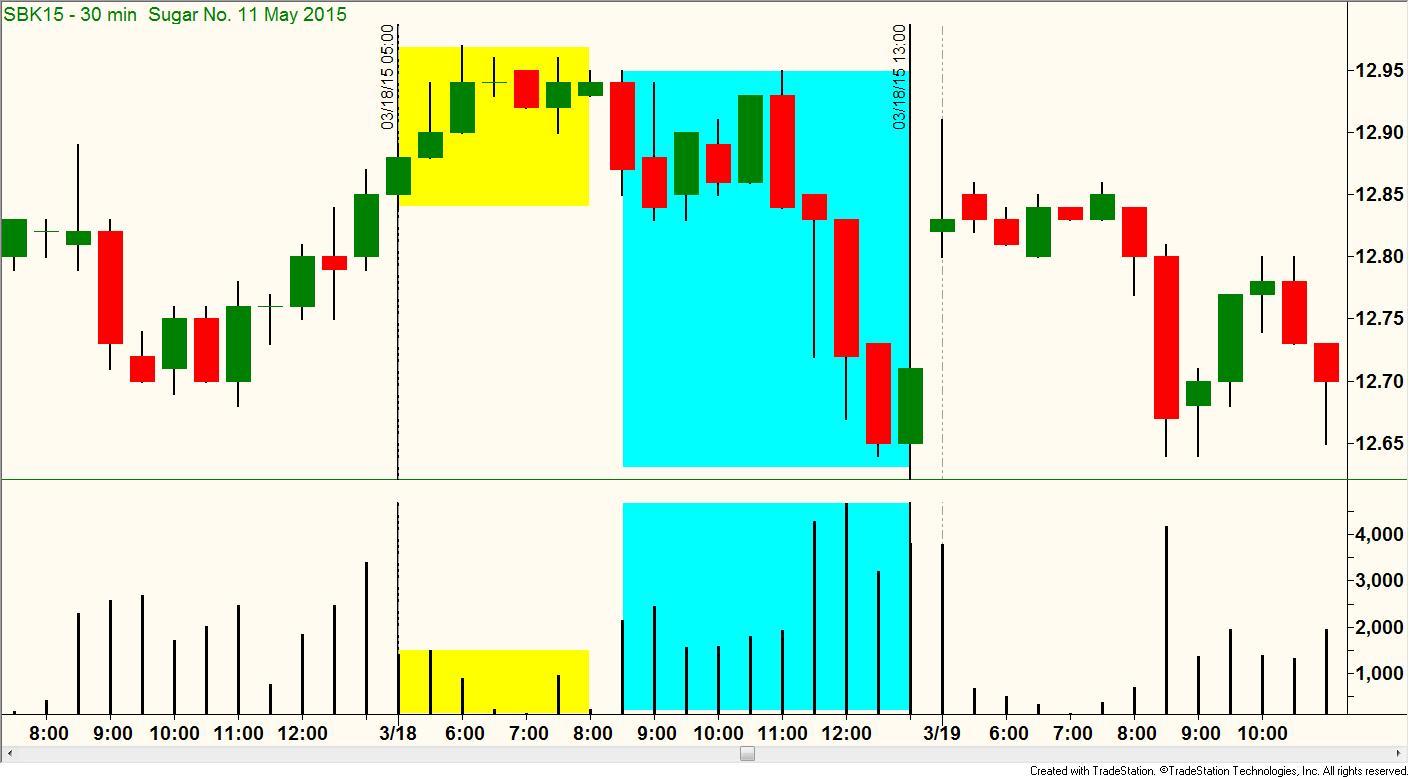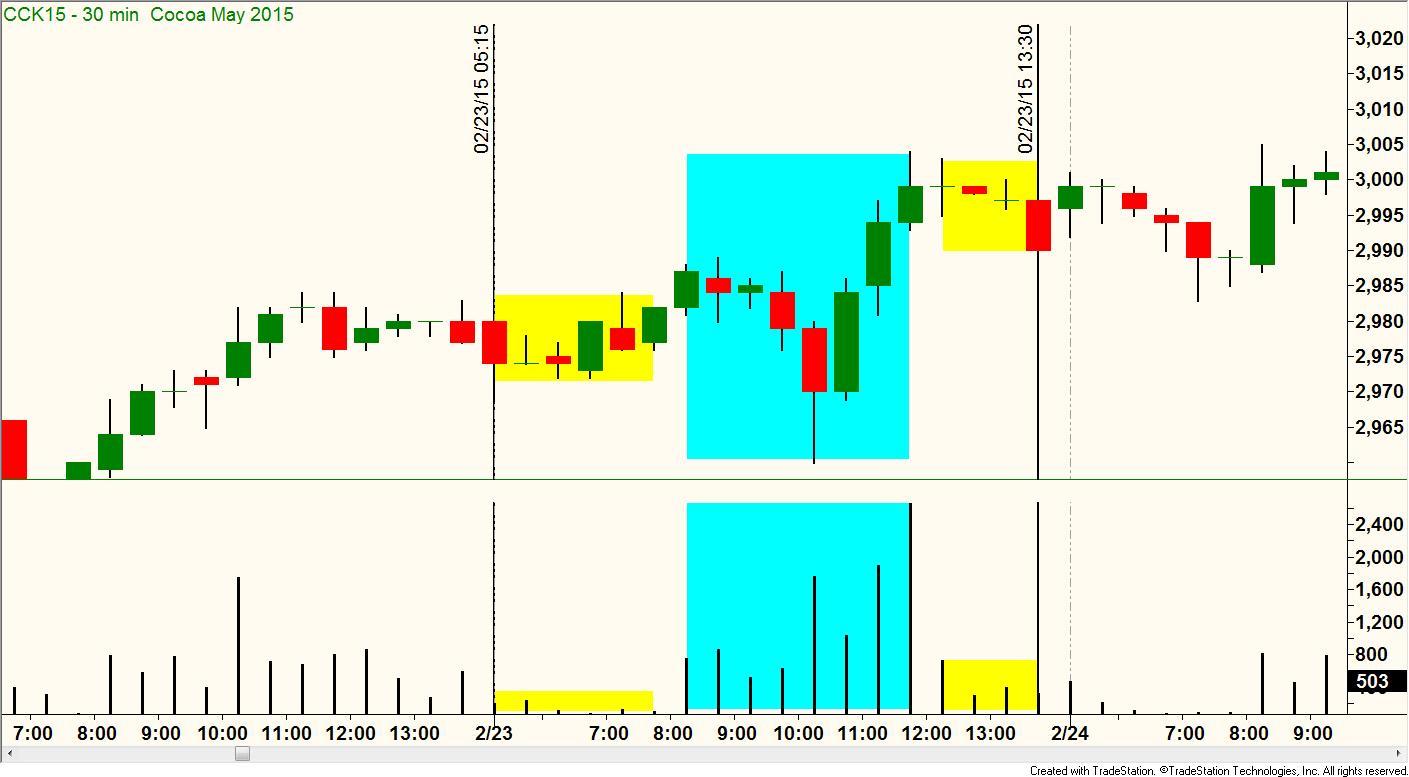The Chicago Mercantile Group (CME Group) announced recently it will be closing all open outcry trading pits except the S&P contract in July of 2015. Since the New York Mercantile Exchange (energy markets) and the Comex Exchange (metals markets) in New York are part of the CME Group, they will be closing their open outcry trading pits as well. All Futures markets traded on the CME Group’s trading floors will now be exclusively traded on the CME Groups Globex electronic trading platform (excluding the S&P which will continue to trade open outcry and electronically).
This will end an era of 117 years of open outcry auctions for trading Futures contracts. Due to the dynamics of competition from international Exchanges, this had to be done to reduce the overhead to keep the world’s largest Futures Exchange running. The Futures Exchanges in the United States began consolidating several years ago when the CME and the Chicago Board of Trade (CBOT) merged to start this cost reduction process. Electronic trading reduces the cost of labor and facility size over open outcry trading pits therefore reducing operating cost. Soon after, the CME acquired the NYMEX and COMEX Exchanges in New York putting all these Exchanges under the name of the CME Group Exchange. Recently, the CME Group also acquired the Kansas City Board of Trade (KCBT) and the Minneapolis Grain Exchange (MGE) as well. There is only one other Futures Exchange left in the United States and that is the Inter-Continental Exchange (ICE).
For many years open outcry trading was the only way to get your orders filled on the Futures Exchanges. Then electronic trading came along and the members of the Exchanges would not let electronic trading run during the regular trading hours (RTH) because it took business away from the market makers. It didn’t take long before the members were forced to allow simultaneous trading of the electronic trading and the open outcry sessions. This created a more transparent and level playing field for the off the floor traders. We could now see the volume traded, current bid/ask and get instant fills instead of waiting for hours in some cases to get a fill report back (a report from the floor telling you your fill price, if your order was even filled).
Electronic trading has been a tremendous advantage to the Exchanges for creating revenue as well. I believe that if traders had to place orders like we did back in the days before electronic trading (phoning orders to the floor or your broker), that there would not be near as many Futures traders as we have today. Electronic trading also creates a chance for a trader to overtrade because of the ease of executing an order. The Exchanges charge you a hefty price for each contract you trade which is built into your commissions.
But how will the closing of the trading pits impact Futures trading going forward?
To find the answer to this question all we have to do is look at some markets that have already been converted from open outcry to all electronic trading. These markets used to trade on the New York Board of Trade (NYBOT) which was located in the basement of the World Trade Center. After the tragic incident of September 11, 2001, the Exchange had to set up temporary trading floors in warehouses in New Jersey.
Soon after that move, the ICE Exchange acquired the NYBOT and all of its products. Since the ICE Exchange has always been a purely electronic Exchange with no trading pits for Futures, the concern was the same for that move as we are now seeing with the CME closing its open outcry and going purely electronic… How will this impact trading of those Futures contracts?
Believe it or not the markets never changed, if anything they got better because they were traded electronically and there were no market makers taking advantage of off the floor traders. But the biggest question has been – what about the high volume trading session times, will that change?
In the following charts you will see the Sugar and Cocoa contracts with volume throughout the entire session they currently trade. The “high volume” time of the day has stayed almost exactly the same time as when these markets had open outcry trading. And this is exactly what will happen to the CME Group Futures contracts as well, no change.
The reason is because the Futures markets were created for the Commercial traders and the Commercials do not change their hours of operation when trying to hedge their price risk.
Figure 1 shows the sugar markets for one trading day’s session between the two vertical lines. The yellow box represents the early morning opening at 03:30 ET to about 08:00 ET. Notice the very low volume during this period and the size of the candles in the yellow box in the chart. Each day around 08:00 ET the volume spikes and stays high until close in the afternoon close. These high volume sessions are shown in the blue boxes with higher volume and more full bodied candles.
What is really interesting is that the blue box session has the same trading hours as when the Sugar contract traded on the NYBOT in the open outcry pits.
Figure 2 is the Cocoa market, another product that was originally traded on the NYBOT but now trades on the ICE Exchange electronic platform. Remember, any product that trades on the ICE has nothing to do with the CME Group’s Globex platform.
The two vertical lines represent a single trading session on the ICE Exchange. The first yellow box shows very low volume and smaller candle ranges when the market first starts trading each day at 04:45 ET. Then around 08:00 ET the volume spikes and the candles in the blue box have more full bodied candles. The second yellow box shows smaller candles and lower volume again. This is because the official settlement time for Cocoa is 11:50 ET each trading day. After that time it is just post market trading, with low volume. The 08:00 ET to 11:50 ET is approximately the same hours the trading pits were open for trading when they had open outcry in New York.
All of the other products that were acquired by the ICE have this same trading pattern. So, when the CME Group closes the trading pits in July we should expect to see the exact same thing. All of the open outcry trading hours (RTH) will still be the high volume sessions of the day even though it will be traded purely electronically.
“A misty morning does not signify a cloudy day”
This content is intended to provide educational information only. This information should not be construed as individual or customized legal, tax, financial or investment services. As each individual's situation is unique, a qualified professional should be consulted before making legal, tax, financial and investment decisions. The educational information provided in this article does not comprise any course or a part of any course that may be used as an educational credit for any certification purpose and will not prepare any User to be accredited for any licenses in any industry and will not prepare any User to get a job. Reproduced by permission from OTAcademy.com click here for Terms of Use: https://www.otacademy.com/about/terms
Editors’ Picks
EUR/USD edges lower toward 1.0700 post-US PCE

EUR/USD stays under modest bearish pressure but manages to hold above 1.0700 in the American session on Friday. The US Dollar (USD) gathers strength against its rivals after the stronger-than-forecast PCE inflation data, not allowing the pair to gain traction.
GBP/USD retreats to 1.2500 on renewed USD strength

GBP/USD lost its traction and turned negative on the day near 1.2500. Following the stronger-than-expected PCE inflation readings from the US, the USD stays resilient and makes it difficult for the pair to gather recovery momentum.
Gold struggles to hold above $2,350 following US inflation

Gold turned south and declined toward $2,340, erasing a large portion of its daily gains, as the USD benefited from PCE inflation data. The benchmark 10-year US yield, however, stays in negative territory and helps XAU/USD limit its losses.
Bitcoin Weekly Forecast: BTC’s next breakout could propel it to $80,000 Premium

Bitcoin’s recent price consolidation could be nearing its end as technical indicators and on-chain metrics suggest a potential upward breakout. However, this move would not be straightforward and could punish impatient investors.
Week ahead – Hawkish risk as Fed and NFP on tap, Eurozone data eyed too

Fed meets on Wednesday as US inflation stays elevated. Will Friday’s jobs report bring relief or more angst for the markets? Eurozone flash GDP and CPI numbers in focus for the Euro.
RECOMMENDED LESSONS
Making money in forex is easy if you know how the bankers trade!
Discover how to make money in forex is easy if you know how the bankers trade!
5 Forex News Events You Need To Know
In the fast moving world of currency markets, it is extremely important for new traders to know the list of important forex news...
Top 10 Chart Patterns Every Trader Should Know
Chart patterns are one of the most effective trading tools for a trader. They are pure price-action, and form on the basis of underlying buying and...
7 Ways to Avoid Forex Scams
The forex industry is recently seeing more and more scams. Here are 7 ways to avoid losing your money in such scams: Forex scams are becoming frequent. Michael Greenberg reports on luxurious expenses, including a submarine bought from the money taken from forex traders. Here’s another report of a forex fraud. So, how can we avoid falling in such forex scams?
What Are the 10 Fatal Mistakes Traders Make
Trading is exciting. Trading is hard. Trading is extremely hard. Some say that it takes more than 10,000 hours to master. Others believe that trading is the way to quick riches. They might be both wrong. What is important to know that no matter how experienced you are, mistakes will be part of the trading process.


